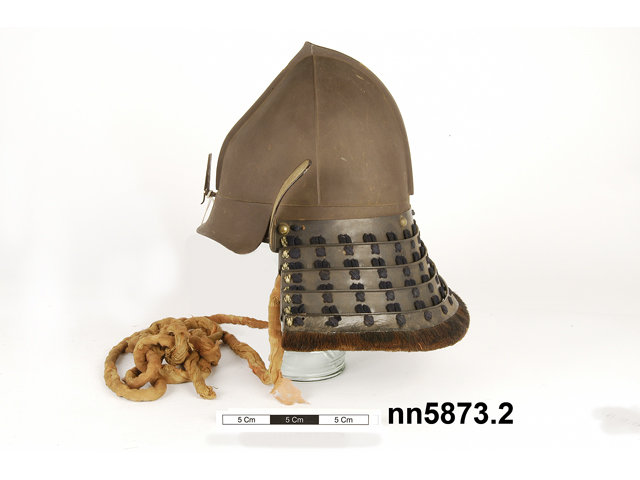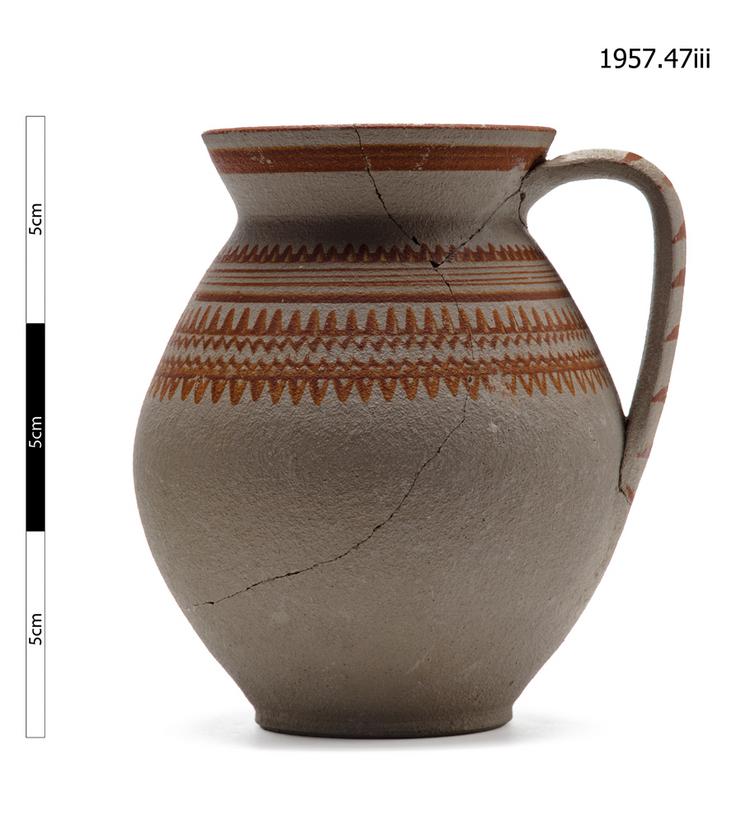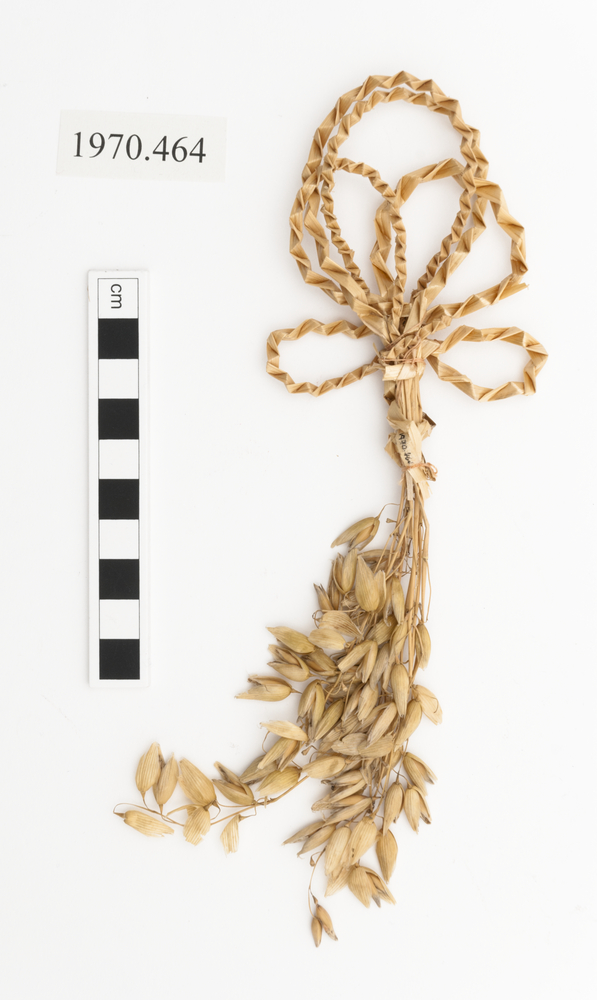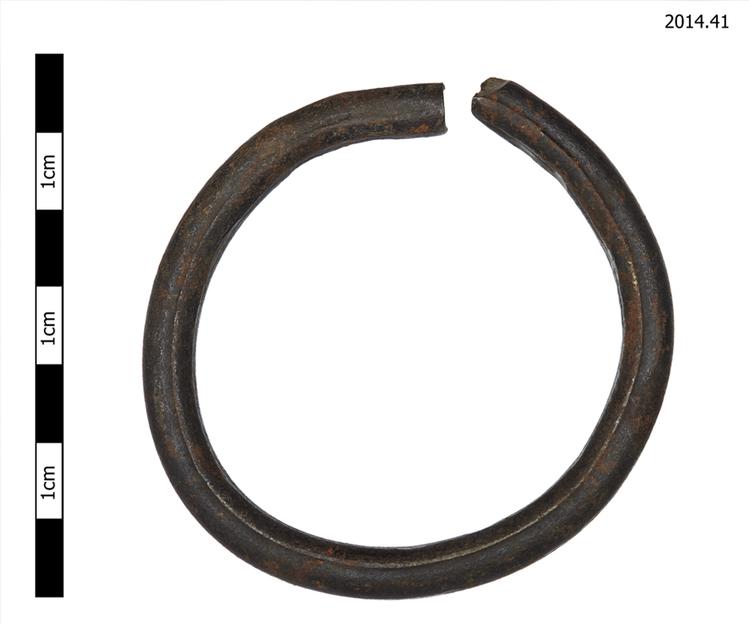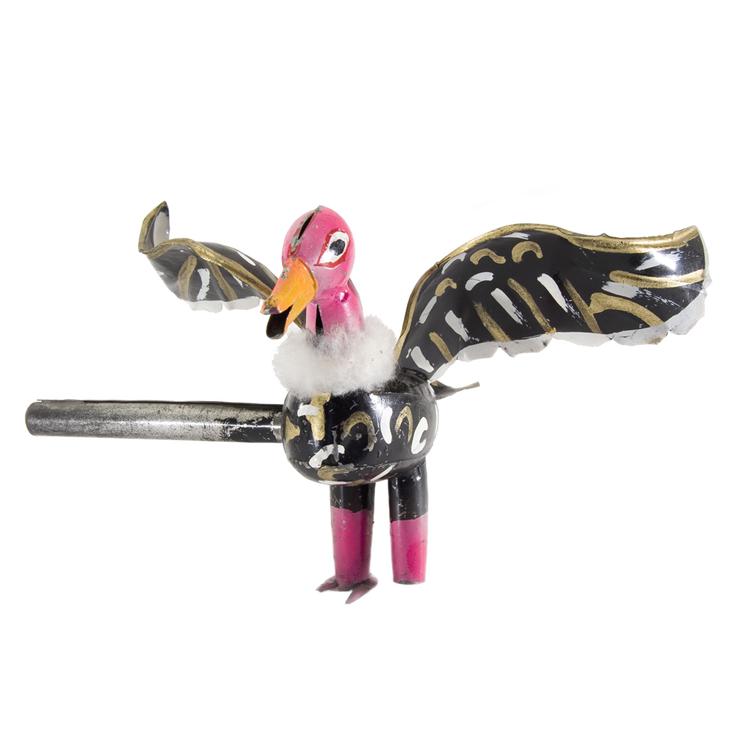
Painted tin toy bird, known as a matraca, or Easter rattle, painted black and pink with fake fur neck. Makes noise when rotated.
The Holy Week, Semana Santa, is celebrated by processions and festivities throughout Mexico. It begins on Palm Sunday with the Blessing of the Palms, but really gets underway in earnest on Maunday Thursday when in addition to normal church services there may also be a re enactment of the last supper. Church bells are usually silenced for the three days of Easter and people are called to the services by the use of a large wooden clapper also called a Matraca. Good Friday is marked in many towns and villages by the performance of a Passion Play, but it is Easter Saturday that most children look forward to. On Easter Saturday Large paper figures of Judas are stuffed with fireworks and paraded through the town, before being exploded. The noise is added to by the spectators with their Matracas. Easter Sunday is the highlight of the week when church attendance is high and there are noisy celebrations in front of the church.
Called a 'cog rattle'. Held by the handle and spun to create the rattling sound. Used as part of Easter celebrations in Mexico, typically on Easter Saturday alongside large paper figures of Judas which are stuffed with fireworks and paraded through the town before being exploded and outside of church on Easter Sunday.



